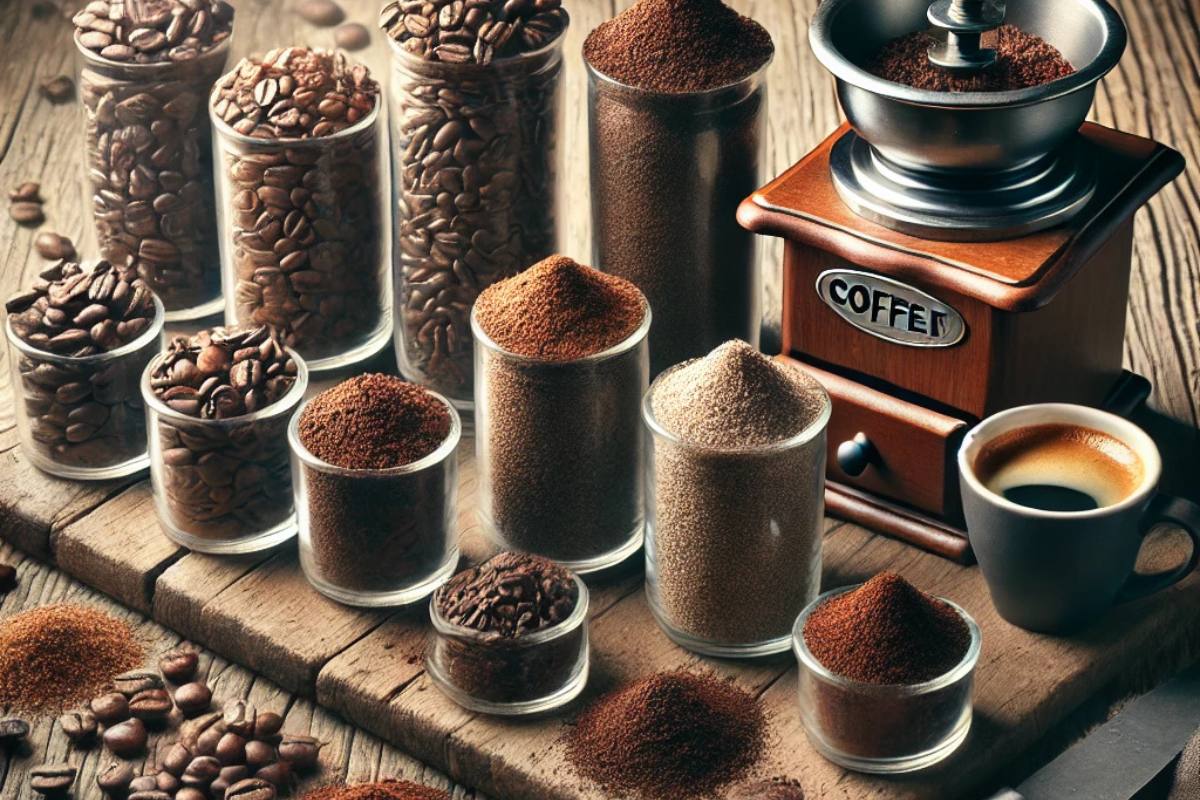When it comes to brewing the perfect cup of coffee, many factors come into play—water temperature, brewing method, coffee bean quality, and freshness. However, one of the most crucial yet often overlooked aspects is grind size. The grind size directly affects the flavor, aroma, and overall quality of your coffee. Understanding how it works can transform your brewing experience, whether you’re using a French press, espresso machine, or pour-over.
Why Grind Size Matters
Grind size determines how quickly water extracts flavors from the coffee grounds. If the grounds are too coarse or too fine for your brewing method, the result can be an under-extracted or over-extracted cup, leading to bitter, sour, or weak flavors.
In simple terms:
- Too coarse = under-extraction (sour, weak coffee).
- Too fine = over-extraction (bitter, harsh coffee).
Mastering grind size is the key to achieving balance and unlocking the full potential of your coffee beans.
How Grind Size Affects Extraction
When hot water meets coffee grounds, it begins extracting soluble compounds:
- First, the acids (bright flavors).
- Then, sweetness and aromatic oils.
- Finally, bitter compounds.
If the grind is wrong:
- Coarse grinds don’t provide enough surface area for proper extraction.
- Fine grinds provide too much surface area, extracting too quickly and too much.
The goal is to match the grind size to the brewing method, allowing the water to pass through at the ideal rate for balanced extraction.
Common Grind Sizes for Different Brewing Methods
1. Coarse Grind
- Texture: Similar to sea salt.
- Best for: French Press, Cold Brew, Percolator.
- Reason: Longer brew times need larger particles to avoid over-extraction.
2. Medium-Coarse Grind
- Texture: Rough sand.
- Best for: Chemex, Clever Dripper.
- Reason: Provides balanced extraction with medium flow rates.
3. Medium Grind
- Texture: Regular sand or table salt.
- Best for: Drip Coffee Makers, AeroPress (with long brew times), Siphon.
- Reason: Versatile grind for common home brewers.
4. Medium-Fine Grind
- Texture: Finer than sand but not powdery.
- Best for: Pour-over (Hario V60, Kalita Wave), AeroPress (with shorter brew times).
- Reason: Balanced control of flow rate and extraction.
5. Fine Grind
- Texture: Like sugar or flour.
- Best for: Espresso, Moka Pot.
- Reason: High pressure brewing needs fine grounds for proper resistance.
6. Extra Fine Grind
- Texture: Powdery, almost like flour.
- Best for: Turkish Coffee.
- Reason: This method requires grounds to dissolve almost entirely in the brew.
Signs Your Grind Size Is Wrong
Too Coarse
- Sour, acidic taste.
- Watery mouthfeel.
- Underwhelming aroma.
Too Fine
- Bitter, harsh taste.
- Overwhelming body, muddy texture.
- Takes too long to brew (especially in pour-over).
How to Adjust Your Grind for Better Coffee
- Taste First: Brew, then taste. If it’s too sour, grind finer. If too bitter, grind coarser.
- Check Brew Time: For pour-overs, 2.5–3.5 minutes is typical. Faster or slower may indicate incorrect grind.
- Observe Flow: In espresso, if the shot runs too fast, grind finer. If it drips too slowly, grind coarser.
- Consistency Matters: Invest in a burr grinder instead of a blade grinder for more consistent particle sizes.
Manual vs Electric Grinders
- Manual Burr Grinder: Affordable, portable, great for small batches.
- Electric Burr Grinder: Consistent and efficient, suitable for daily use and larger amounts.
- Blade Grinder (Not Recommended): Inconsistent grind size, leading to uneven extraction.
Why a Consistent Grind Is Non-Negotiable
Inconsistent grind sizes lead to both under- and over-extraction in the same cup. Small particles over-extract while large ones under-extract, creating confusing and unpleasant flavors. A consistent grind ensures:
- Balanced flavor.
- Better aroma.
- Smooth texture.
Tips for Perfect Grind Every Time
- Clean your grinder regularly to avoid buildup that can affect consistency.
- Buy whole beans and grind just before brewing to preserve freshness.
- Start with a recommended grind size, then fine-tune based on taste.
- Use fresh, filtered water—grind size is crucial, but water quality also impacts taste.
Final Thoughts
Grind size isn’t just a minor detail—it’s a major factor in brewing coffee that tastes amazing. By understanding and mastering grind size, you take control over your coffee’s flavor profile, whether you’re brewing a rich espresso, a clean pour-over, or a smooth cold brew. Investing time in adjusting your grind will reward you with consistently delicious cups every time.
